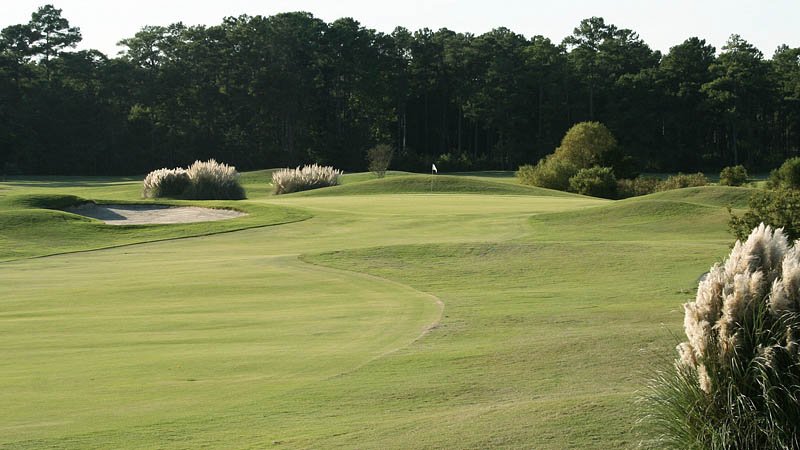
Looks can be deceiving.
Known for its striking beauty and sold throughout much of the world as a prized ornamental, pampas grass is found on a lot of golf courses throughout the sun belt. Easy to grow and relatively maintenance free, pampas grass and its sprouting plumes of white and purple often is seen on golf courses at entryways to parking lots, along fairway boundaries and on teeing areas to frame signage. It does not enjoy such a flowery reputation, however, in places like Hawaii and California, where it is fuel for wildfires and is considered a noxious weed. Its proliferation in Hawaii is so unchecked that there are efforts afoot there to eradicate it from the landscape.
A native to the Pampas region of South America, which comprises nearly 300,000 square miles of remote pasturelands in parts of Argentina, Brazil and Uruguay, pampas grass has been sold around the world as an ornamental for more than 150 years. It can grow in low-lying wetlands and on the slopes of mountains, and if left unmanaged can grow to more than 10 feet in height. Each year, a single plume can produce up to 100,000 seeds that, in contradiction to the plant’s robust mature state, are so small and light they can be carried on the wind for 20 miles or more.
That makes pampas grass troublesome for those who do not want it, and the Big Island Invasive Species Committee on the island of Hawaii is on a mission to ensure that part of the state is rid of it. The committee is even asking for help from private landowners, including golf courses, to help identify it and remove it. That mission started more than a decade ago, and is still in progress, though officials there say they are close to eradicating it.
Complicating the efforts of those trying to remove it is that even when mature plants are subtracted from the landscape through herbicide applications (fluzazifop, glyphosate and imazapyr are common tools against it) and digging up what is left underground, seeds can remain viable in the soil for several years, according to BIISC, so removing the plants and ensuring they do not return can seem like an expensive and never-ending process. That’s a problem in areas plagued by wildfires.
Once a coveted ornamental in the southeast, the University of Florida Institute of Food and Agriculture Sciences now considers it an invasive weed and recommends against planting it anywhere in the state.
The grass first was brought to California, Santa Barbara specifically, as an ornamental in 1948. Today, its range is widespread around the state and efforts to remove it have been ongoing for more than 10 years. Its aggressive nature is a dead giveaway that it is out of its element when planted near populated areas, like California, even if it seems at home.
For example, Georgia-Pacific, one of the world’s largest paper producers, reportedly abandoned a 1,000-acre site in central California in the 1960s after it planted the tall-growing grass to prevent deer from eating new tree seedlings. The grass was so prolific it overwhelmed the field. The deer didn’t return, and neither did the trees that G-P had planted.
Other parts of California have struggled with pampas grass and the fire threat it presents for years. Once an area has burned, pampas grass and other non-native species tend to grow back stronger than ever. Nearly 3 million acres, mostly in the state’s northern tier, have burned the past three years.
The East Bay city of Ashland currently is considering a wildfire ordinance that would ban more than 20 varieties of trees, shrubs and grasses, including pampas grass.
Three years ago, the San Dieguito River Valley Conservancy in Rancho Santa Fe, located 25 miles north of San Diego, began a program of removing highly flammable invasive species to reduce fire risk. The project started with just a few acres along the river, but private landowners seeing the benefits have joined in, bring the number of acres to be denuded of invasive plants to nearly 200.

